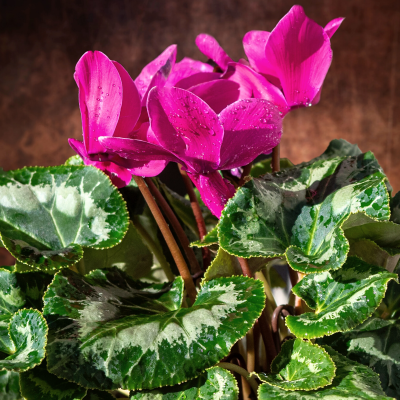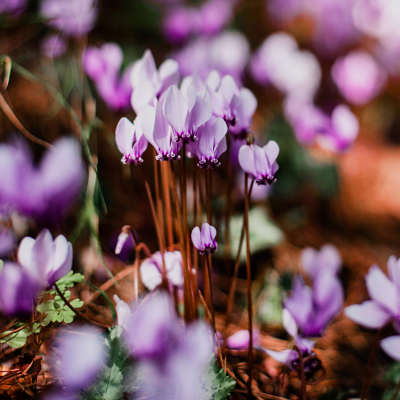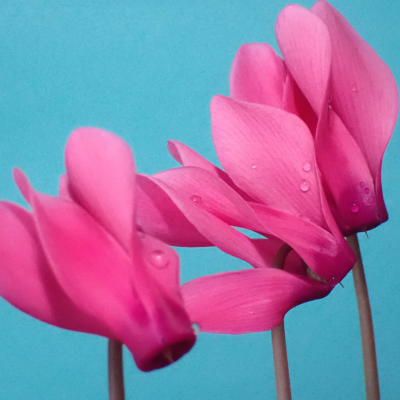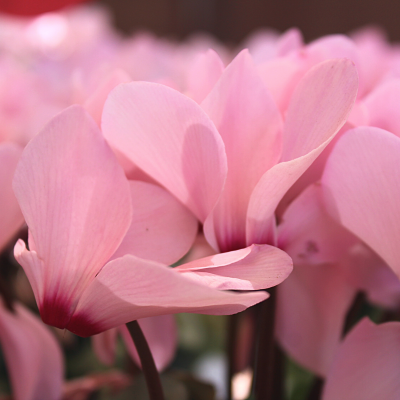About Hardy Cyclamen
Hardy cyclamen get the common name “sowbread” because pigs like to uproot and eat the tubers. They are also sometimes called “Persian violet” or “alpine violet,” though these are misleading common names because cyclamen are not violets, nor are they from Persia. Most people, however, prefer to use the genus name “cyclamen.”
Hardy cyclamen are small perennials that love to be in shady rock gardens, alpine beds or pots. These plants bloom with pink, white or purple flowers whose petals are usually flexed back 90° to 180°. People often think these “inside out” flowers look like shuttlecocks or fairy wings. Blooms are most often seen in the fall and late winter and are beautifully accented by green and silver patterned leaves.
Many native cyclamen populations are decreasing due to plant poaching, an unsustainable and often illegal theft of native plants for the horticultural trade. As a result, some species of cyclamen are now considered endangered. To combat these losses, many plant conservation charities are working to educate local people about sustainable harvesting. Training helps to sustain native cyclamen populations while also producing a more reliable income for harvesters. Horticulturists have also begun to propagate cyclamen in nurseries, decreasing the demand for native plants.
Common Names:
- Hardy Cyclamen
- Eastern Sowbread
- Persian Violet
- Alpine Violet
Hardy Cyclamen at the Akron Zoo
Our cyclamen collection can be found in beds west of the Conservation Carousel. Look carefully — these plants are small and easy to miss unless flowering. They go dormant from late spring to mid-fall.





